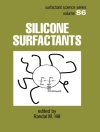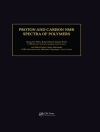Spintronics (short for spin electronics, or spin transport electronics) exploits both the intrinsic spin of the electron and its associated magnetic moment, in addition to its fundamental electronic charge, in solid-state devices. Controlling the spin of electrons within a device can produce surprising and substantial changes in its properties.
Drawing from many cutting edge fields, including physics, materials science, and electronics device technology, spintronics has provided the key concepts for many next generation information processing and transmitting technologies. This book discusses all aspects of spintronics from basic science to applications and covers:
• magnetic semiconductors
• topological insulators
• spin current science
• spin caloritronics
• ultrafast magnetization reversal
• magneto-resistance effects and devices
• spin transistors
• quantum information devices
This book provides a comprehensive introduction to Spintronics for researchers and students in academia and industry.
Mục lục
List of Contributors
Series Preface
Preface
Introduction
Chapter 1: Fundamentals of magnetoresistance effects
K. Takanashi
Chapter 2: Spintronics Materials with High Spin Polarization
Y.K. Takahashi and K. Hono
Chapter 3: Spin current
Eijih Saitoh
Chapter 4: Spin Hall effect and inverse spin Hall effect
Shuichi Murakami
Chapter 5: Spin torque (domain wall drive, magnetization reversal)
Akinobu Yamaguchi
Chapter 6: Spin Pumping
Matthias Althammer, Mathias Weiler, Hans Huebl, and Sebastian T.B.Goennenwein
Chapter 7: Spin Seebeck effect
Jiang Xiao
Chapter8: Spin conversion at magnetic interfaces
Tomoyasu Taniyama
Chapter 9: Carbon-based Spintronics
Masashi Shiraishi
Chapter 10: Silicon spintronics for next-generation devices
Kohei Hamaya
Chapter 11: Electric-field control of magnetism in ferromagnetic semiconductors
Tomoteru Fukumura
Chapter 12: Quantum information processing using nitrogen-vacancy centres in diamond
Norikazu Mizuochi
Chapter 13: Ultrafast light-induced spin reversal in amorphous rare earth-transition metal alloy films
Arata Sukamoto
Index
Giới thiệu về tác giả
Katsuaki Sato is Professor Emeritus at Tokyo University of Agriculture and Technology (TUAT), Japan and a Program Officer of the PRESTO Project ‘Next-Generation Innovative Devices’, Japan Science and Technology Agency. After graduating from Kyoto University in 1964, he was affiliated with the Broadcasting Science Research Laboratories of NHK (Japan Broadcasting Corporation) until 1984. He received his degree of Dr. Eng., from Kyoto University in 1978, then got a professorship position at TUAT in 1984. He assumed Vice President of TUAT in 2005, and retired in 2007. His main research topics are applied solid state physics including magneto-optics, magnetic semiconductors, ternary and multinary semiconductors and superconducting devices. He is a Fellow of the Japan Society of Applied Physics.
Eiji Saitoh is a Professor at the Institute for Materials Research, Tohoku University, Japan. He received his Ph D degree from Tokyo University. He was an Assistant Professor and a Lecturer at Keio University. He has been awarded the Sir Martin Wood Prize in 2008, IUPAP Young Scientist Award in 2009, and Japan Academy Medal in 2011. His main research topics are experimental solid state physics including spintronics, electronic properties in strongly correlated electron systems and nanoscale magnetism.












